Published: June 2, 2024 | 11 mins read
Calcium Phosphate Kidney Stones: Subtypes and Causes
ARTICLE SHORTCUTS
- Calcium Phosphate Kidney Stones
- CaP Stones vs CaOx Stones
- Calcium Phosphate Kidney Stone Subtypes
- Calcium Phosphate Kidney Stone Causes
- Strategies to Treat/ Prevent CaP Stones
Calcium-based stones are like a coin. They are divided into two categories – Calcium oxalate kidney stones (CaOx) and Calcium phosphate kidney stones (CaP).
While around 80% of kidney stone cases globally are CaOx stones, only a minority, less than 10%, have CaP stones. Most calcium phosphate stone-formers are women.
Though CaP stone-formers are relatively few, they require special attention as they are more prone to kidney damage. Why is that so? Hop onto the next section to know the reason.
Calcium Phosphate Kidney Stones
Calcium phosphate kidney stones are also dual. Most CaP stone-formers have stones made of hydroxyapatite (HA), which is similar to bone mineral. Meanwhile, some have stones containing brushite, a type of calcium monohydrogen phosphate.
Both types of calcium phosphate kidney stones require special attention. Phosphate stones, whether HA or brushite, can grow faster and larger than calcium oxalate stones.
Calcium phosphate crystals resemble soldiers invading a land. They invade kidney tissues (nephrocalcinosis), causing blockages and tissue damage. When they do so, kidney tissues fail to function properly. People sometimes mistake this for a medullary sponge kidney.
Both brushite and HA stone-formers could experience these blockages. However, brushite stones tend to cause more kidney damage, placing those affected in a high-risk group.
Since calcium phosphate kidney stones pose graver complications than calcium oxalate kidney stones, how do you effectively distinguish which group your calcium stone belongs to?
The next chapter will teach you how.
CaP Stones vs CaOx Stones
The rule is simple. Suppose calcium oxalate composes more than 50% of a patient’s kidney stones. In that case, the patient is classified as a CaOx stone-former. If over 50% of the stones are calcium phosphate, the patient is classified as a CaP stone-former.
However, please note that if your stone contains any trace of brushite, regardless of its percent, it is considered a brushite stone.
Brushite, as mentioned earlier, causes large tubule plugs and more severe kidney damage. Just imagine, if you found mold on one of your shirts, regardless of how small, you single it out and separate from other clothes. In the same way, even if brushite makes up only a small part of the stone, the patient is classified as a brushite stone-former. This classification is important because brushite stones are resistant to Shockwave Lithotripsy (SWL) and have a very high recurrence rate.
This is why it is crucial to have your stone identified. We detailed three ways to do it in our blog, “How to Identify Your Kidney Stones.” In addition to that blog, you can also try to identify your kidney stone visually using the list we will give in the next chapter.
Calcium Phosphate Kidney Stone Subtypes
All kidney stones have unique appearances. If you spot your kidney stone on the list below, it is likely included in the CaP stone family.
Let’s start identifying your stone.
TYPE IVa1 CaP STONES
These stones exhibit the following characteristics:
- Whitish color
- Rough texture
- Even surface
Their section shows a poorly organized structure, with loose concentric layers of the same color as the surface. These stones can oftentimes be mixed with Calcium Oxalate Monohydrate and Dihydrate as well.
Usually, these stones form due to hypercalciuria (excess urinary calcium) or urinary tract infection.
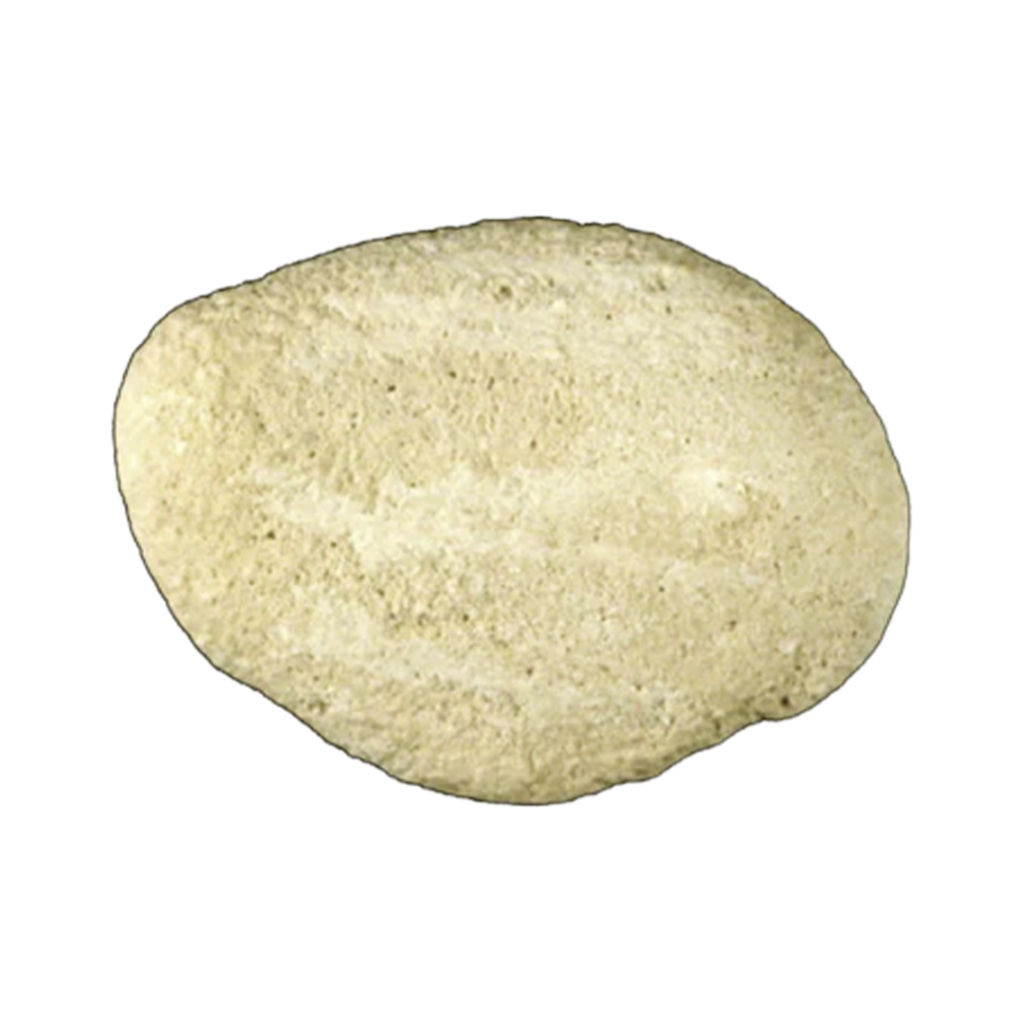
TYPE IVa2 CaP STONES
Type IVa2 stones have a very peculiar form:
- Smooth surface
- Yellow-brown color
- A glazed appearance and small cracks
Internally, they have concentric layers of thin whitish and thick yellow-brown layers.
This subtype is likely a product of inherited or acquired distal renal tubular acidosis (improper acid handling), Sjogren syndrome (an immune condition), or chronic hepatitis (liver inflammation).
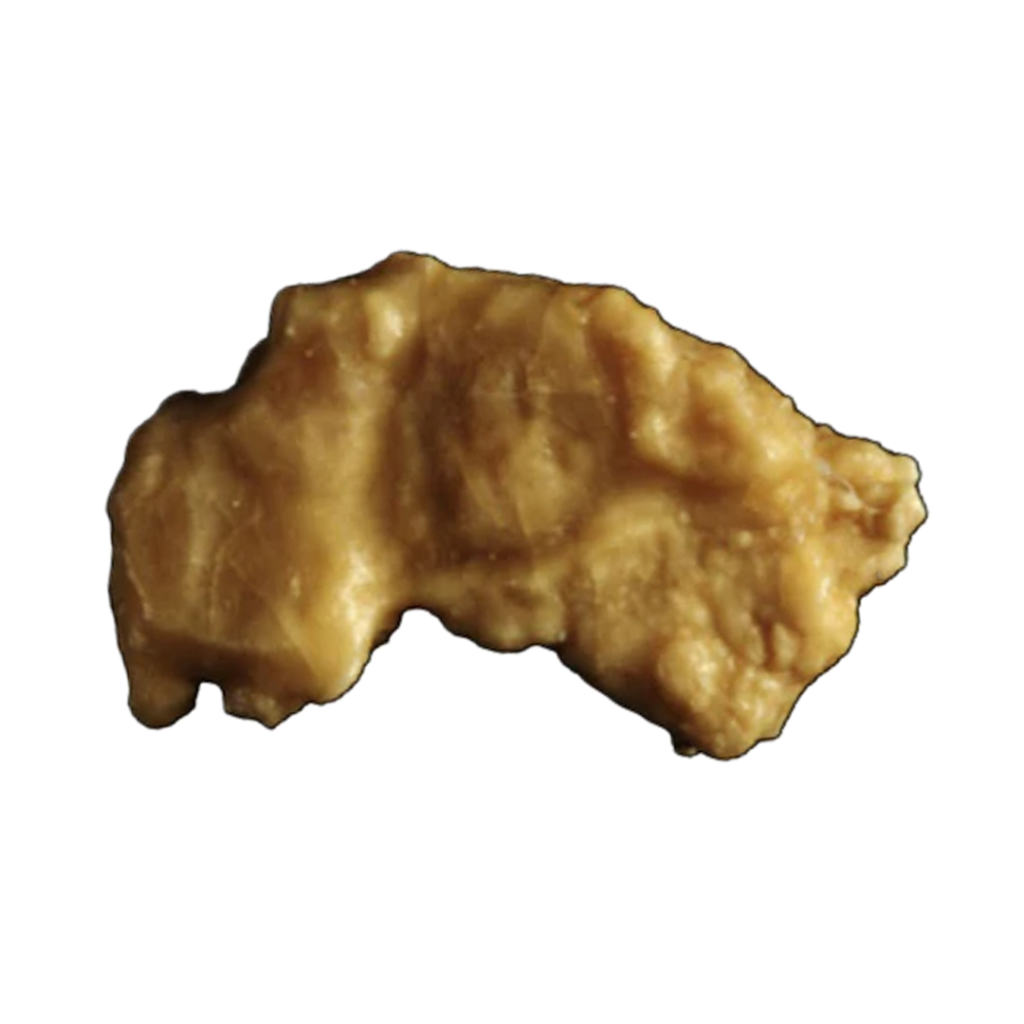
TYPE IVb CaP STONES
Type IVb has these chracteristics:
- Embossed/rough surface
- Clear to dark brown color
The internal structure is composed of alternating thick whitish and thin brown-yellow layers.
The common causes of this subtype are urinary tract infections, hypercalciuria, and primary hyperparathyroidism (impairs calcium regulation).
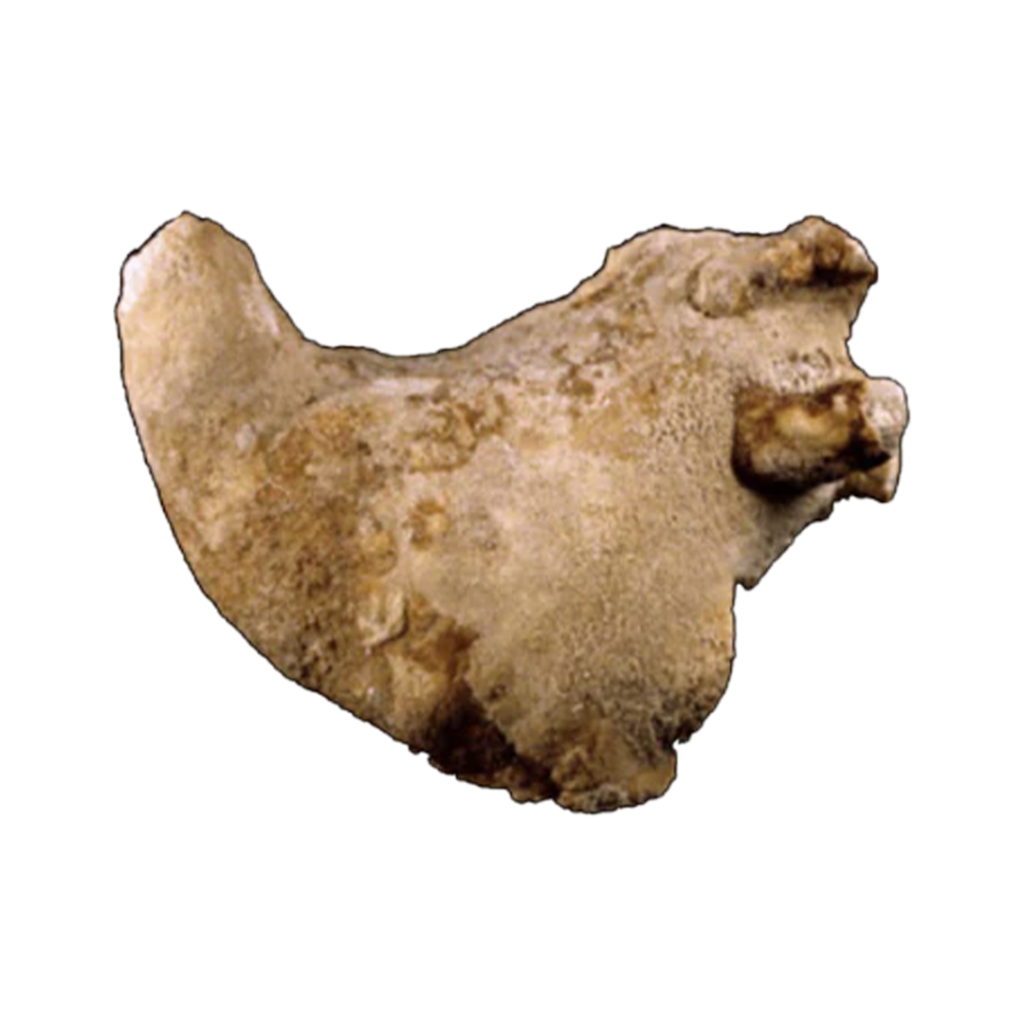
TYPE IVc CaP “STRUVITE” STONES
This subtype exhibits these physical features:
- Whitish color
- Surface made up of large crystals
- With blunt angles and edges
Additionally, Type IVc stones have a loose-radial internal structure.
The possible cause of this subtype is urinary tract infection by urea-splitting bacteria, on top of other common CaP risk factors.
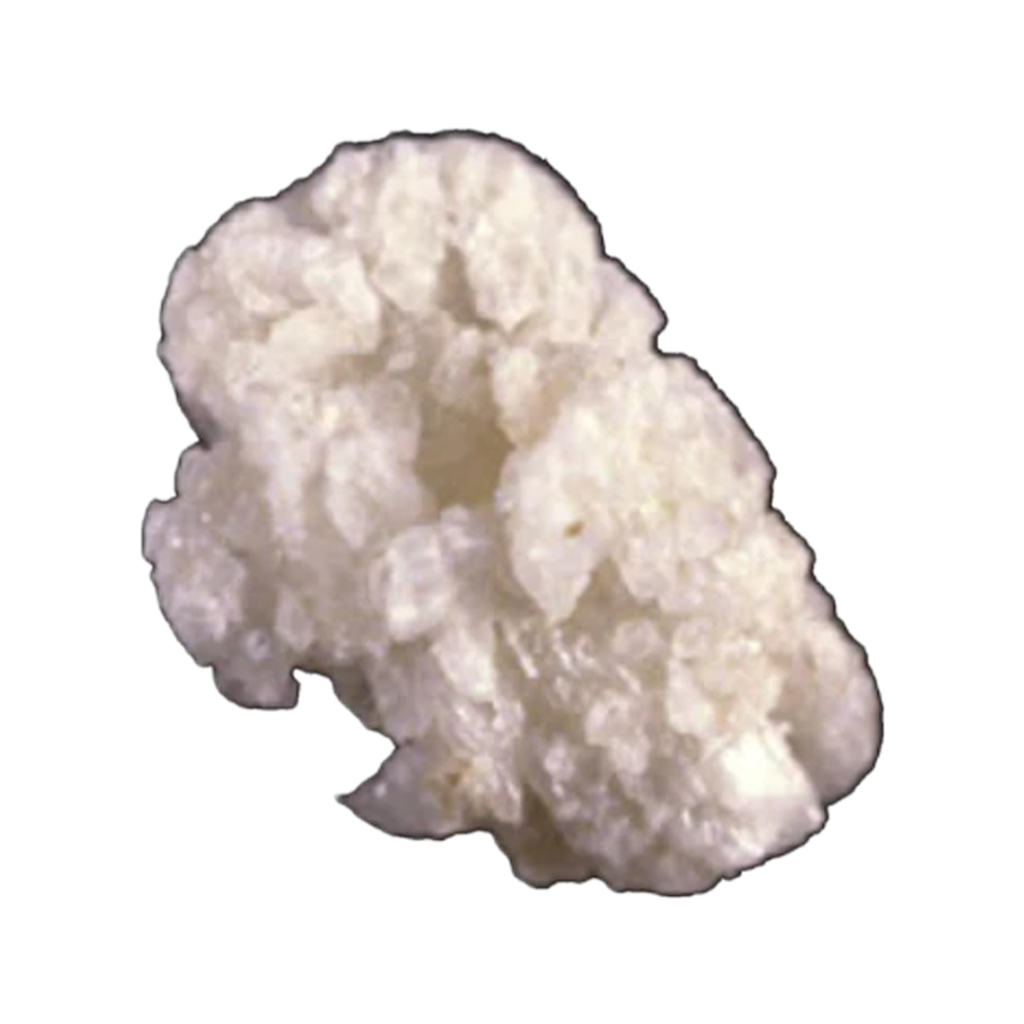
In the initial stages, brushite stones are characterized by the following:
- Large rod-shaped crystals (evolve towards being slightly rough or resembling a cabbage)
- Whitish or beige
The interior structure is characterized by radial crystallization with locally concentric layers.
Brushite stones can form due to hypercalciuria, primary hyperparathyroidism, phosphate leak, and medullary sponge kidney (a congenital disorder).
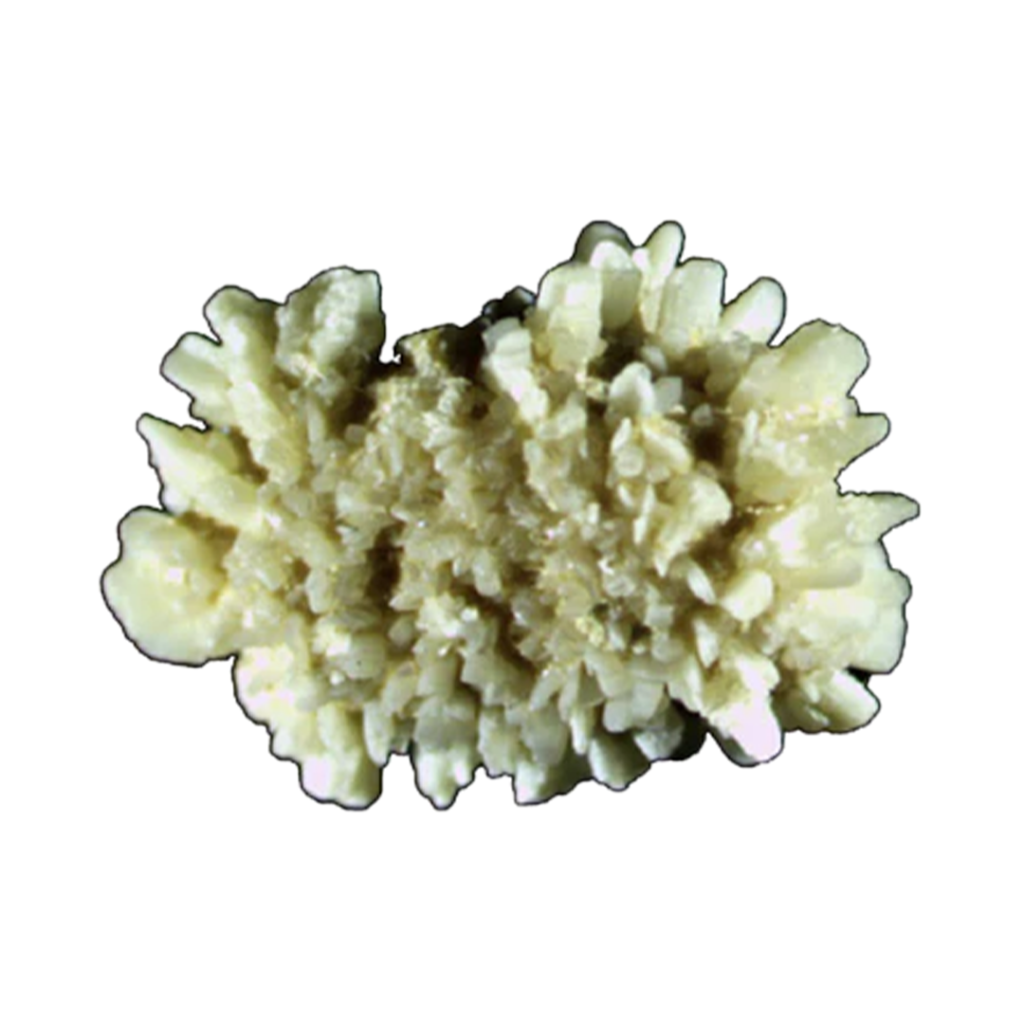
Did you know that CaOx stones and CaP stones can also mix together?
In fact, stones made of a mix of calcium oxalate (monohydrate and/or dihydrate) and carbapatite (without struvite) are twice as common as stones with calcium phosphate (CaP) as the main component. These mixed stones comprise 19.7% of all stones, while pure CaP stones are only around 8.2%.
In the next chapter, you will discover the different subtypes of mixed CaOx and CaP stones.
Mixed CaOx & CaP Stones
Mixed calcium oxalate/calcium phosphate stones are usually found in people with idiopathic (of unknown origin) hypercalciuria and relatively high urine pH (over 7.0 pH). However, they can also indicate specific conditions like medullary sponge kidneys (MSK) and, less commonly, primary hyperparathyroidism.
IIa/b + IVa1
Mainly related to hypercalciuria, irrespective of their origin. The carbapatite content may strongly influence the inner structure of the stones.
(IIa + IVa1)i “inorganise”
When carbapatite is below 20%, the stone structure is commonly driven by poorly organized clusters of calcium oxalate dihydrate (COD) crystals with CaP deposits in the spaces between crystal aggregates.
(IIa + IVa1)c “concentrique”
By contrast, a high carbapatite content (roughly 20%-70%) commonly results in another organization characterized by irregular and alternate layers of carbapatite and COD.
Were you able to spot your kidney stone on the list?
Suppose you confirmed that your stone is really a calcium phosphate kidney stone. Let’s talk about the possible causes of why you formed this stone type to better equip yourself on how to stop future formations.
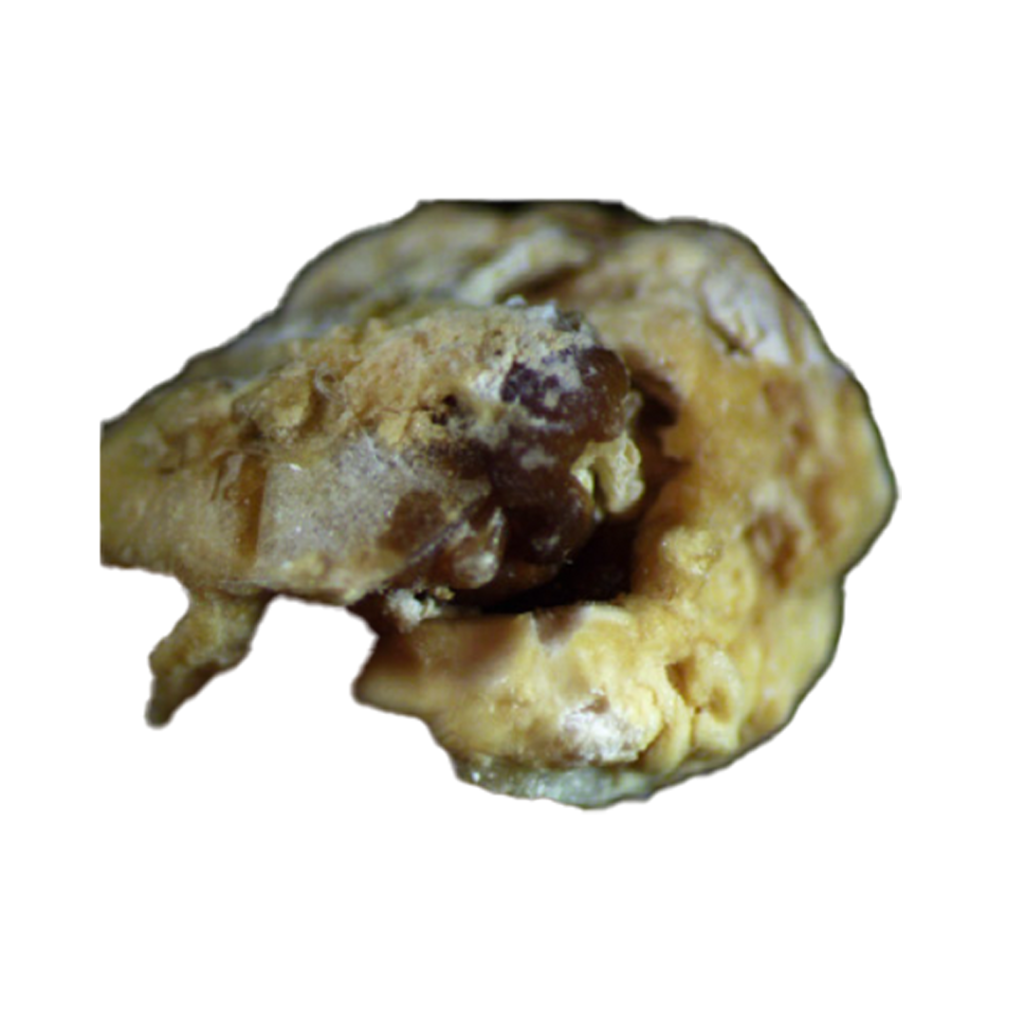
Type IIa/b + IVa1 stones may look different internally depending on the reasons why they form.
For instance, if you are eating a diet high in plant matter, and you excrete excess oxalates in the urine, on top of other CaP stone risk factors, this mixed stone type will form on a calcium phosphate plaque called Randall’s Plaque (ground zero for CaOx stones). The stone’s internal structure would look like this:
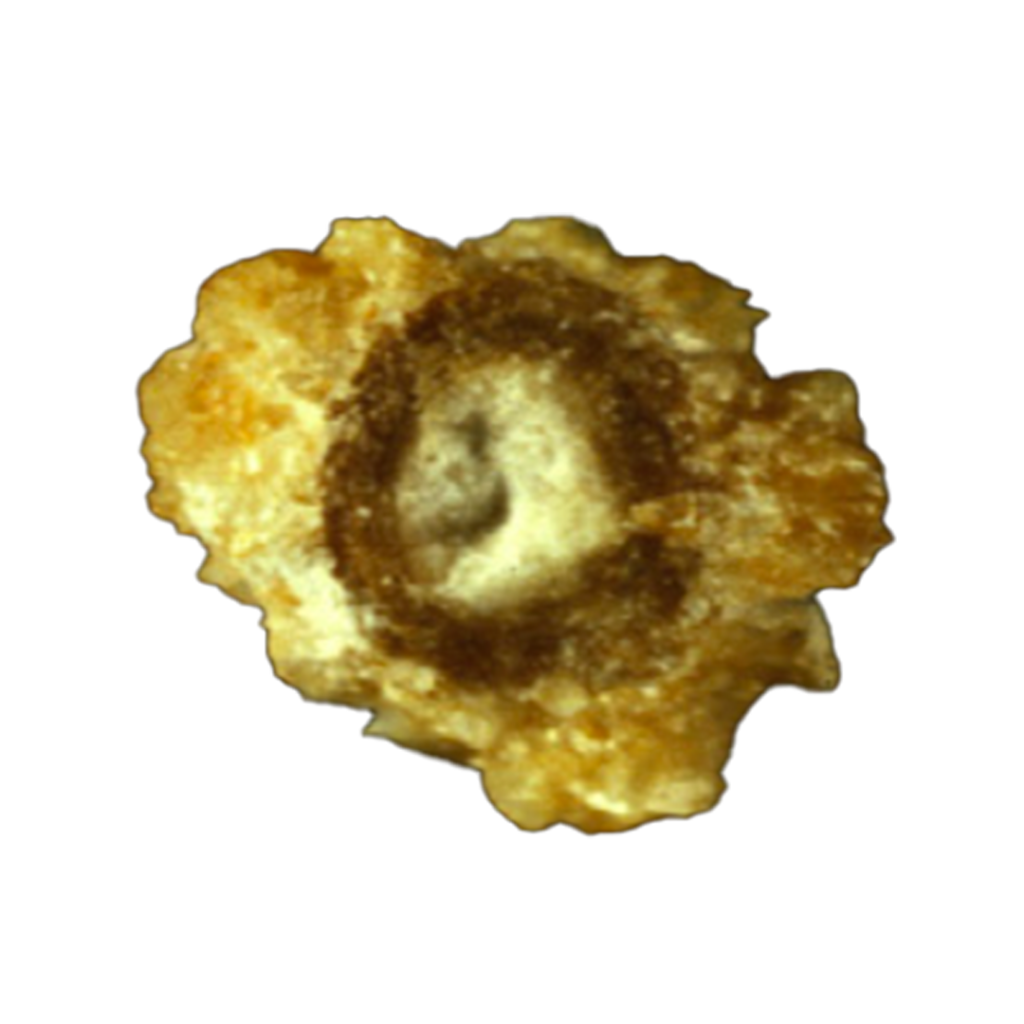
However, if the main driving factor is medullary sponge kidney (MSK), aside from alkaline urine, your mixed CaOx and CaP stone would look like this internally:
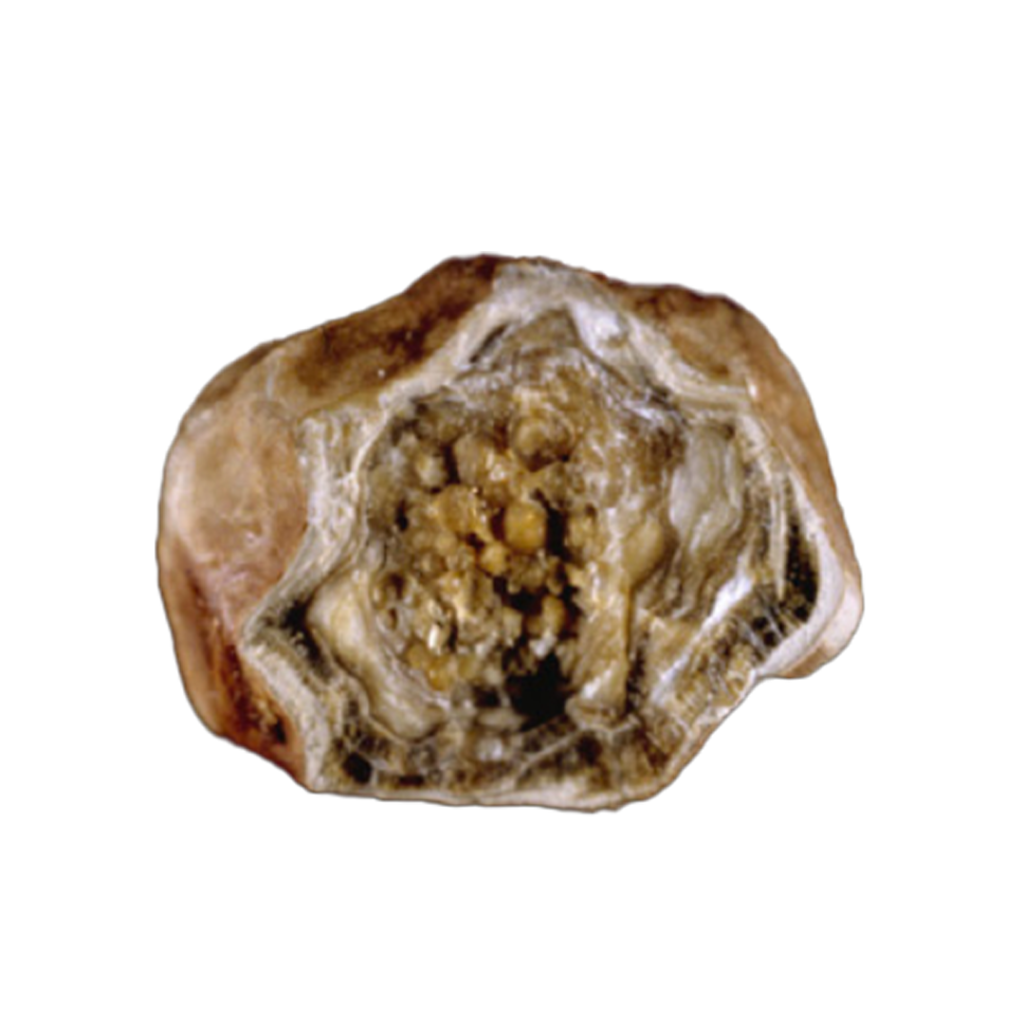
Calcium Phosphate Kidney Stone Causes
If you love eating green salads, it’s time to stop doing so. That’s because the major reason calcium phosphate kidney stones form is alkaline urine (over 7.5 pH). When urine is alkaline, phosphate binds with calcium instead of oxalates. Calcium, phosphate, citrate, and urine volume have NO significant impact on this stone type without alkaline urine. In short, alkaline urine is the glue that binds these elements together to form stones. Without alkaline urine, no CaP stone will form. Problem solved!
Urine becomes alkaline because the kidneys produce excess ammonia (an alkaline ion) or fail to handle acid effectively. Many doctors would claim that alkaline urine is likely a product of kidney dysfunction of unknown cause. However, we have a theory that it all relates to a person’s diet high in toxic plant matter that impacts metabolic health.
We’ll show you why we believe so.
1. Ammonia production is related to body acid load
Kidneys excrete acid by making ammonia that can carry acid into urine without lowering urine pH.
Ammonia production is related to body acid load. Body acids are highly impacted by the foods we eat and our metabolic health.
Studies have shown that excess linoleic acid (omega-6 fatty acid) from seed and vegetable oils is the primary cause of metabolic dysfunction due to gut inflammation.
2. Plant foods are generally alkaline
This fact might have fallen on you like a bomb from the sky. But that is the truth. Plant foods are generally alkaline in nature. Vegetables, nuts, seeds, etc., are alkaline. So, to avoid alkaline urine, you better stop munching on plants.
3. Distal renal tubular acidosis (dRTA)
This condition happens when the kidney fails to effectively excrete acid from the blood. The kidneys are not excreting enough hydrogen ions (H+), which are acidic. The failure to excrete them in urine makes the urine alkaline.
Aside from alkalizing the urine, dRTA also affects other calcium phosphate kidney stone risk factors, which we discussed better in our dRTA blog here.
Why is dRTA connected to diet?
Distal renal tubular acidosis originates from immune dysfunction and electrolyte imbalance (e.g., potassium, sodium, and calcium). If you eat a diet high in plant matter and your metabolism is ruined, you are likely not absorbing the right amount of nutrients from the foods you eat. This compromises your immune system.
Aside from diet, did you know that undergoing Shockwave Lithotripsy (SWL) for kidney stone treatment can also alkalize your urine?
According to a study, the urine pH of kidneys treated with SWL is around 0.18 pH higher than that of untreated kidneys.
This is because SWL damages the kidney tubules, which are small functional tubes in the kidney. The tubules are responsible for the proper excretion of electrolytes and oxalate into the urine.
Due to SWL injury, too much bicarbonate (an alkaline ion) is produced and wasted in the urine. This makes the urine alkaline. Abnormalities are visible up to 90 days after SWL.
Some genetic conditions that primarily affect the kidneys, such as Dent’s disease, also impact urine alkalinity.
Now that we’ve covered the major things that cause alkaline urine under the sun, how about we share some strategies for protecting yourself?
If you think that’s cool, jump into the next section.
Strategies to Treat/ Prevent CaP Stones
Calcium Phosphate stones, with the exception of struvite and brushite stones, are completely breakable and passable using CLEANSE. Struvite stones require Percutaneous nephrolithotomy (PCNL) to remove them quickly without spreading the infection. Brushite stones, which are very dense, may also require PCNL or ureteroscopy (URS) procedures to be effectively removed.
Again, calcium phosphate kidney stones are caused by alkaline urine, which glues all other risk factors together. So, the main focus is to AVOID alkaline urine at all costs.
The main thing you should do right away is cut out foods that alkalize your urine and ruin your metabolism—stop eating plants.
If you think that’s a challenge because it means throwing away your favorites, we invite you to our Coaching Program. This program will help you develop a personalized diet plan to make your shift easier and not heartbreaking.
Also, autoimmune conditions that cause dRTA are reversible with the proper diet. By the right diet, we mean the species-appropriate diet rich in meat, dairy, and other animal-based foods.
Don’t be discouraged when we say you need to stop eating plants. This might sound difficult on the surface, but it will be life-changing if you are a calcium phosphate kidney stone-former. Don’t worry—we are here to help you make the right dietary shift. Join our Coaching Program today, and we will help you with your diet plan.
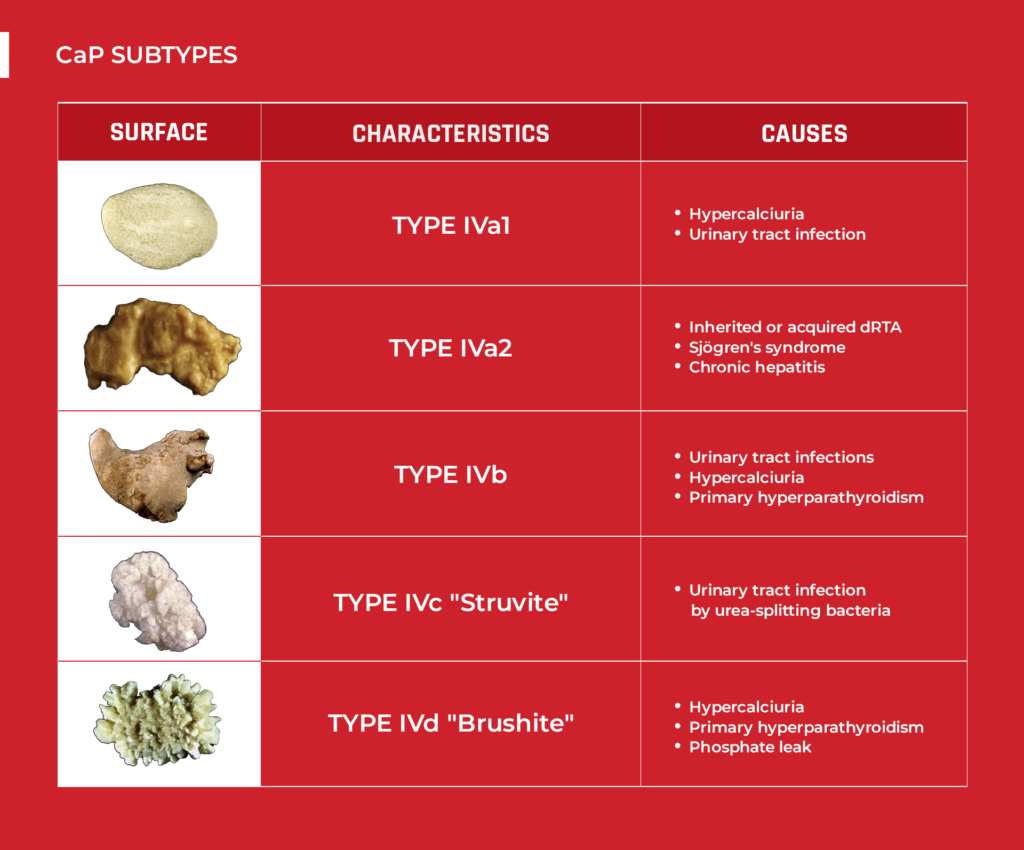
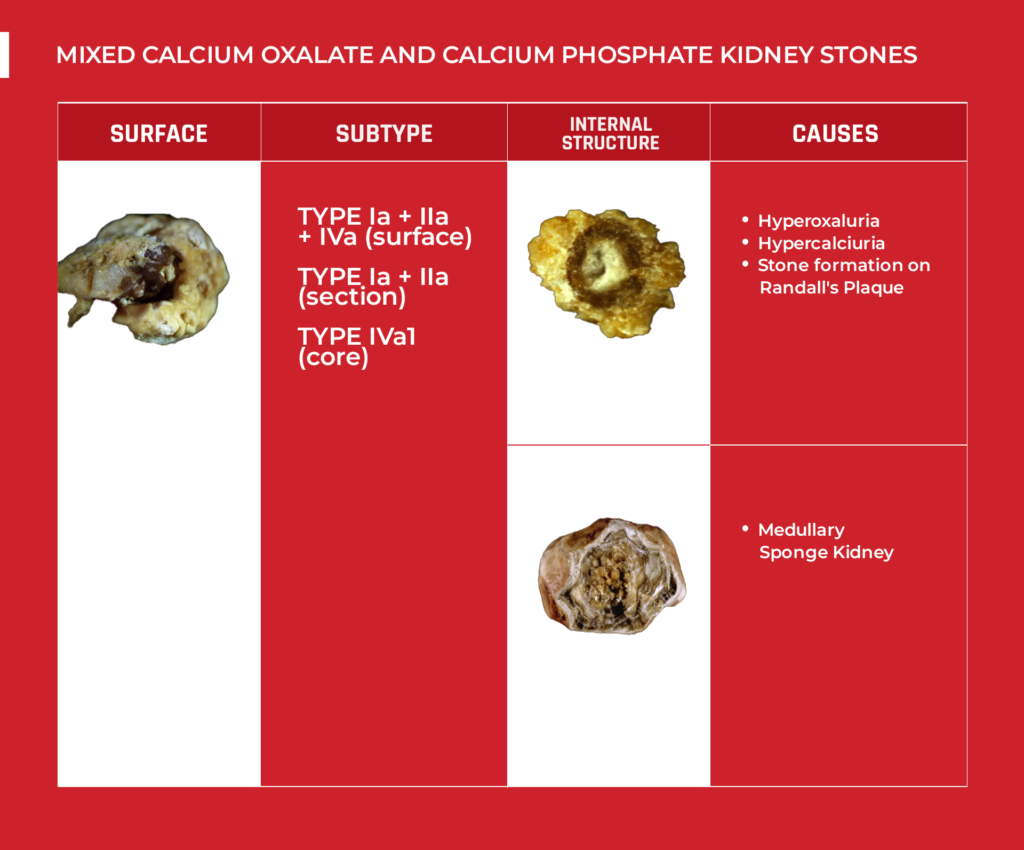
REFERENCE
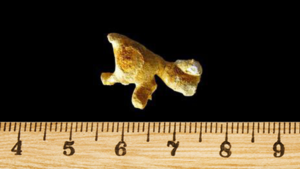
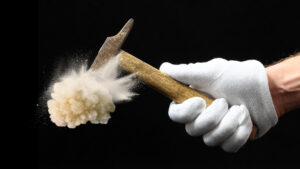
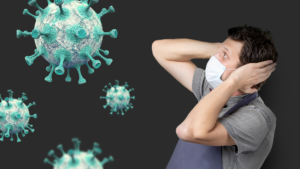

Cleans can broke it even if its 5c”m cap stone?
Hi Rola. Yes, CLEANSE can break apart most calcium phosphate stones. But, there are certain CaP stones that are too dense, like Brushite stones. So, you will want to know your stone’s density from a CT scan ideally first.
And even if you have a stone with a density that CLEANSE can break down, it will still be several months to break down a 5cm stone. I had several 2cm stones that CLEANSE broke down. But, it took 6-9 months.
Please let me know if you have questions.